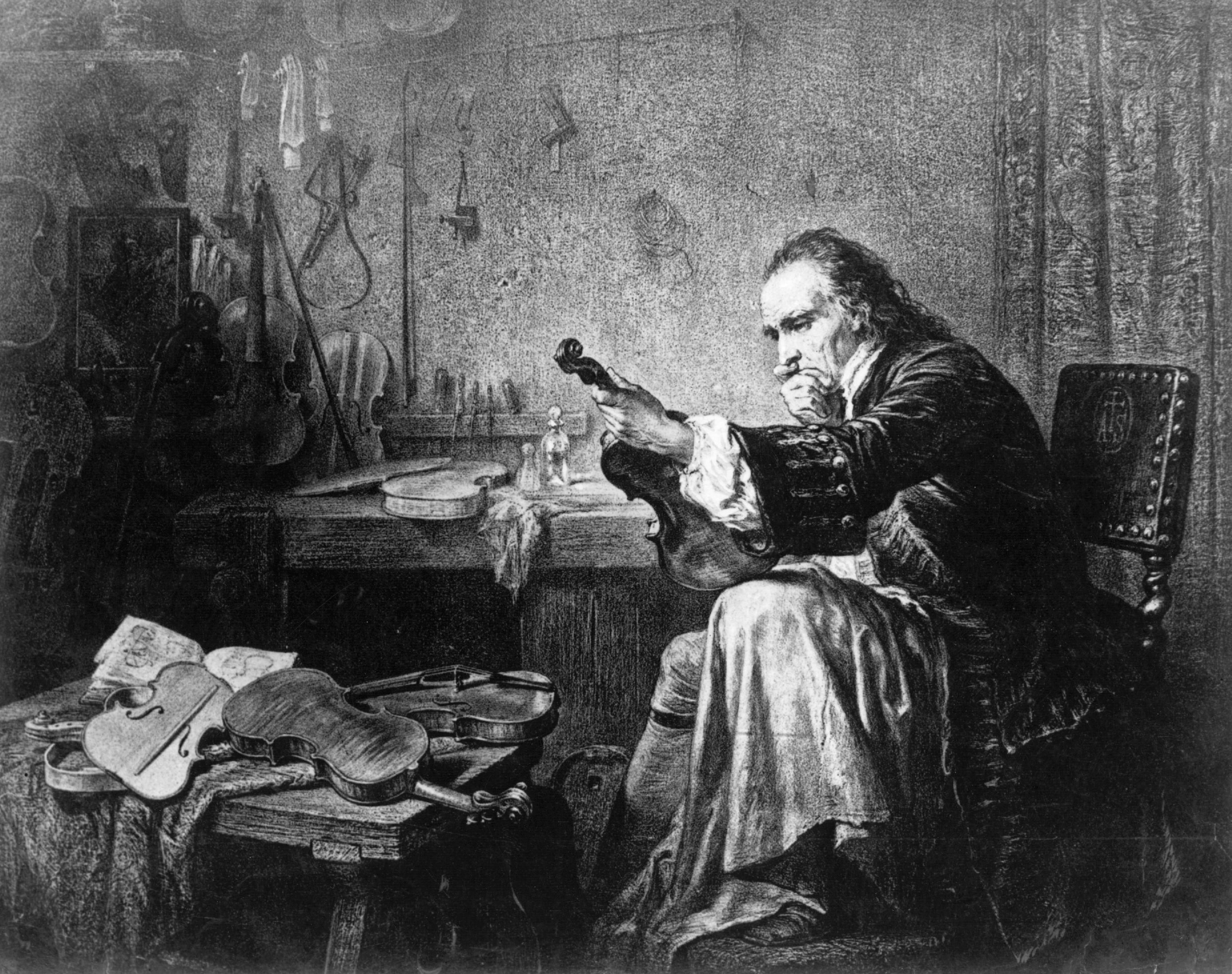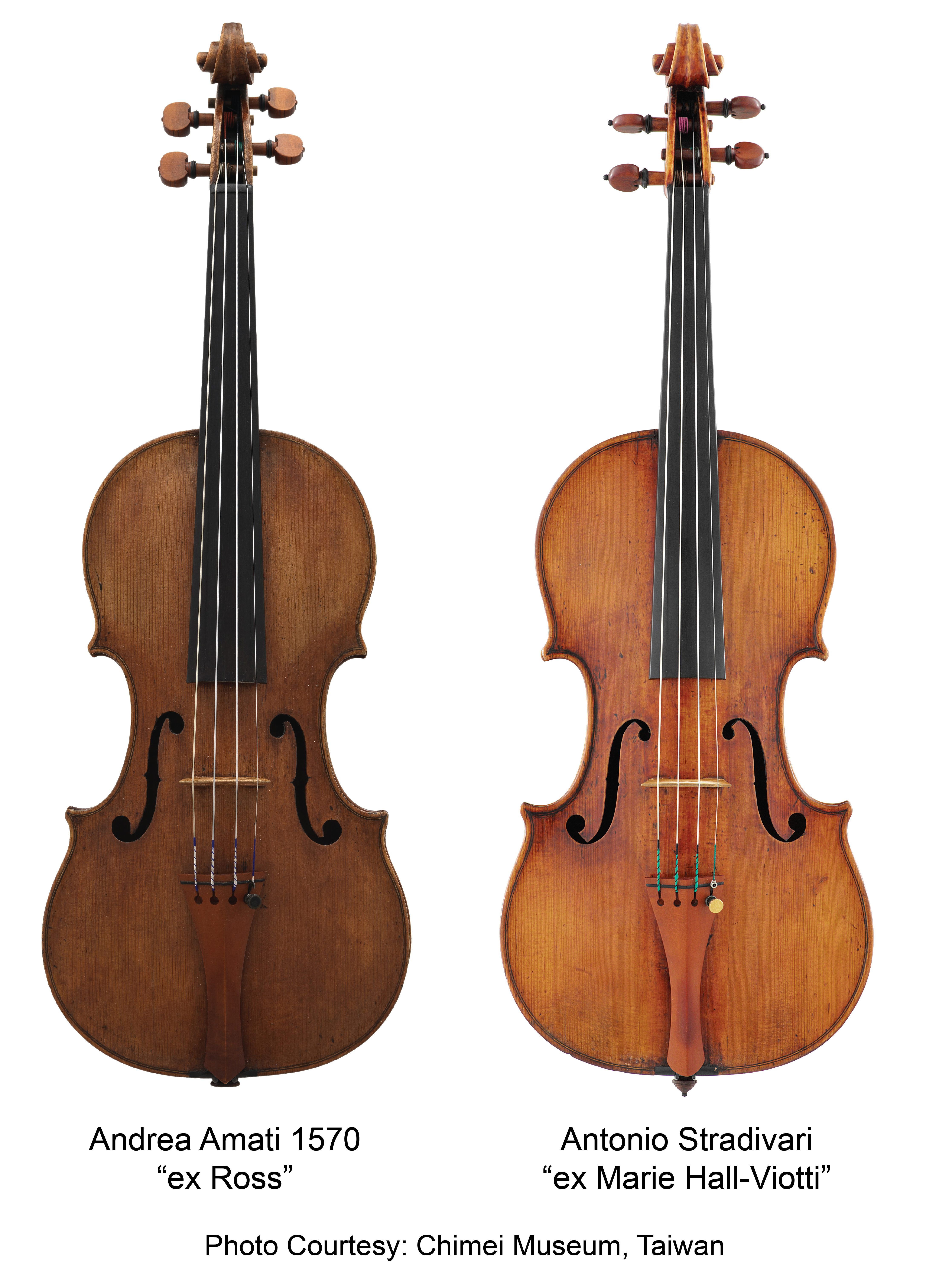The World’s Best Violins Sing Like Humans
Some are baritones, some are tenors.

In 1751, the renowned Italian violinist Francesco Geminiani took a break from bowing and set pen to paper. He aimed to distill his decades of experience into a treatise on how best to approach his preferred instrument. As he explained, he looked down on those violinists who spent their time “imitating the Cock, Cuckoo, Owl, and other Birds.” He also lacked patience for “Contortions of the Head and Body,” “sudden Shifts of the Hand,” and “all other such Tricks.” Instead, he wrote, a great violinist had one job: to achieve “a Tone that shall in a Manner rival the most perfect human Voice.”
A tall order; those Contortions seem much easier. But as recent research has shown, the instruments themselves may help players accomplish Geminiani’s directive. A new study in the Proceedings of the National Academy of Sciences suggests that not only do great violins sing like humans, those built by different makers may remind us of different types of human voices.
Since the 16th century, a disproportionate amount of the world’s great violins have come from Cremona, a city in northern Italy. The luthier Andrea Amati, who had a workshop in Cremona, is widely credited with inventing the violin in the mid-1500s. About a century later, Antonio Stradivari began making his own instruments, also in Cremona.

These instruments—along with those of another luthier, Giuseppe Guarneri—have inspired almost every contemporary take on violin design, but the originals are still considered peerless. “I have heard Stradivari violins in concerts and at close range,” writes the new study’s lead author, Bruce Hwan-Ching Tai. “They sound very unique to my ears.” Tai is both a chemical biologist and a classical music buff, and over the past few years, he and his colleagues have set out to “find an objective explanation” for this stirring sound, he writes. In 2016, for instance, his research group chemically analyzed wood shavings from four Stradivari violins alongside similar bits of modern maples.
They found that, compared to its contemporary analogues, the violin wood had been through a lot. It had been treated with chemicals, possibly to ward off bugs and fungus—a hypothesis originally suggested by Joseph Nagyvary, a biochemist and luthier who has dedicated his life to recreating old violins. It had dried out; and it had vibrated so much from centuries of playing that its very fibers had begun to separate. These centuries of experience, the researchers postulate, helped to give the instruments their particular tone.

For this most recent study, Tai took the opposite tack, focusing on the sound itself. Other researchers, including Nagyvary, had already found sonic similarities between Stradivari notes and particular vowel sounds as sung by humans. Tai and his colleagues undertook a broader investigation, recording a violinist, Chu-Hsuan Feng, playing 15 different violins: five made by the Stradivari family, three made by the Amati family, four made by other Cremonese luthiers, and two made by Brescian luthiers (including Gasparo da Salo, who some consider to have “coinvented” the instrument with Amati). The violins were from the Chimei Museum in Taiwan, and are played “only a few times a year,” Tai writes.
They then had 16 choir members, eight male and eight female, sing the same scale eight times, once for each of the following vowel sounds: “had, head, heard, heed, hod, hoed, hud, who’d.” When the researchers had all of the recordings, they put them through sonic analysis, seeing how different aspects of the violin and human sounds matched up.
Because the researchers were comparing violin sounds with vowel sounds, they focused largely on formants: particular frequency sets that make up vowel vocalizations. When a person says or sings an “I” sound, for example, different parts of his larynx, pharynx, and oral cavity each produce sounds corresponding to a particular set of frequencies, which come together to make up the vowel. The researchers found that, despite lacking this human vocal architecture, the violins, too, produce formants with “vowel-like qualities.”

Another finding suggests that Geminiani was onto something. All of the violins included in the study displayed some sonic overlap with the sung vowels. But in the 1570 Amati and the 1560 da Salo, “every violin note appears to carry some degree of human vowel character,” Tai et. al. write in the paper. “This may have been one of the … goals implemented by Amati” when he was inventing and perfecting his design: to make the violin literally sing.
Finally, while Amati and da Salo violins had formants that resembled those of bass and baritone singers, Stradivari violins’ formants were more similar to tenors and altos. This suggests that Stradivari took the basic idea of a singing instrument and made it his own by changing the type of singer to imitate. “In the future, someone may try to produce violins that mimic mezzo-sopranos or sopranos,” writes Tai. “Whether it can be done or whether it will sound good remain to be seen.”
“Although we did not perform any psychological experiments in this study, I speculate that the similarity between violins and voices can explain why violins are so popular,” Tai concludes. In other words, we may not yet understand quite how these instruments do what they do. But maybe we like them because when they do it, they sound like us.



















Follow us on Twitter to get the latest on the world's hidden wonders.
Like us on Facebook to get the latest on the world's hidden wonders.
Follow us on Twitter Like us on Facebook